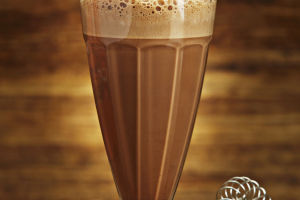Pitta bread, a beloved flatbread known for its soft texture and iconic pocket, has a rich history that spans centuries.
Let’s take a journey through time to explore the origins of this delicious bread and its cultural significance!
Ancient Beginnings in the Middle East
The story of pitta bread begins in the ancient Middle East, where it is believed to have originated around 4,000 years ago. Early forms of flatbread were baked in clay ovens by the Babylonians and other ancient civilizations. These flatbreads were often made from simple ingredients like flour, water, and salt.
The pocket, which is the hallmark of pitta bread today, likely evolved from the traditional method of baking the bread in very hot, clay ovens. As the dough was placed on the hot surface, steam would build up inside the dough, causing it to puff up and form a pocket.
Spread Across the Mediterranean
As empires expanded, so did the reach of pitta bread. The Egyptians, Greeks, and Romans all adopted similar forms of flatbread, incorporating their local ingredients and flavors. By the time the Ottoman Empire rose to prominence, pitta bread was a staple in the diets of people across the Middle East, Central Asia, and North Africa. It was especially popular in countries like Turki, Lebanon, Syria, and Palestine, where it became intertwined with cultural practices and daily life.
Modern-Day Popularity
Over time, pitta bread spread to Europe and beyond, becoming a staple in many countries’ diets. In the 20th century, it gained widespread popularity in Western countries as Mediterranean cuisine became more fashionable. Pitta bread is now commonly found in supermarkets and restaurants around the world.
Cultural Significance
Pitta bread is more than just a food item; it holds deep cultural significance. In the Middle East and Mediterranean regions, pitta is a symbol of hospitality and community. It is often shared among family and friends during meals and celebrations. In countries like Lebanon and Syria, the preparation and sharing of pitta bread is an important social practice that brings people together.
The Evolution of Pitta Bread
While the traditional pitta remains a staple, modern variations of the bread have emerged. Whole wheat, gluten-free, and other variations of pitta bread are now widely available, catering to changing dietary preferences. Its versatility has only expanded, with pitta being used in everything from street food to high-end cuisine.
Dear Lykkers! Today, pitta bread is enjoyed globally, transcending its humble origins to become a beloved component of many different culinary traditions. Whether used to scoop up creamy dips or to hold savory fillings, pitta bread continues to delight people around the world, reminding us of its rich history and the enduring appeal of simple, comforting food!
How to Make Pita Bread
Video by Preppy Kitchen


